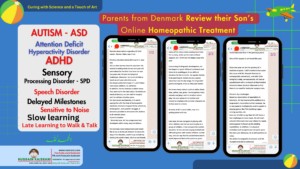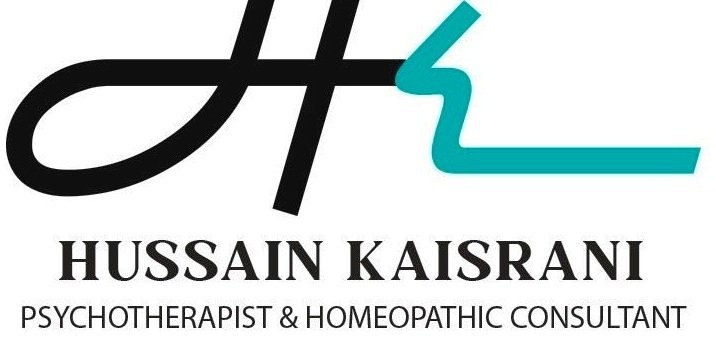Ascariasis is a human disease caused by the parasitic roundworm Ascaris lumbricoides. Perhaps as many as one quarter of the world’s people are infected[1], and ascariasis is particularly prevalent in tropical regions and in areas of poor hygiene. Other species of the genus Ascaris are parasitic and can cause disease in domestic animals.
Infection occurs through ingestion of food contaminated with feces containing Ascaris eggs. The larvae hatch, burrow through the intestine, reach the lungs, and finally migrate up the respiratory tract. From there they are then reswallowed and mature in the intestine, growing up to 30 cm (12 in.) in length and anchoring themselves to the intestinal wall.
Infections are usually asymptomatic, especially if the number of worms is small. They may however be accompanied by inflammation, fever, and diarrhea, and serious problems may develop if the worms migrate to other parts of the body.
Prevalence
Roughly 1.5 billion individuals are infected with this worm, primarily in Africa and Asia.[2][1] Ascariasis is endemic in the United States including Gulf Coast; in Nigeria and in Southeast Asia. One study indicated that the prevalence of ascariasis in the United States at about 4 million (2%) [8]. In a survey of a rural Nova Scotia community, 28.1% of 431 individuals tested were positive for Ascaris, all of them being under age 20, while all 276 tested in metropolitan Halifax were negative[3]. Deposition of ova (eggs) in sewage hints at the degree of ascariasis incidence. A 1978 study showed about 75% of all sewage sludge samples sampled in United States urban catchments contained Ascaris ova, with rates as high as 5 to 100 eggs per litre. In Frankfort, Indiana, 87.5% of the sludge samples were positive with Ascaris, Toxocara, Trichuris, and hookworm. In Macon, Georgia, one of the 13 soil samples tested positive for Ascaris. Municipal wastewater in Riyadh, Saudi Arabia detected over 100 eggs per litre of wastewater [4] and in Czechoslovakia was as high as 240-1050 eggs per litre [5].
Ascariasis can often be measured by examining food for ova. In one field study in Marrakech, Morocco, where raw sewage is used to fertilize crop fields, Ascaris eggs were detected at the rate of 0.18 eggs/kg in potatoes, 0.27 eggs/kg in turnip, 4.63 eggs/kg in mint, 0.7 eggs/kg in carrots, and 1.64 eggs/kg in radish[6]. A similar study in the same area showed that 73% of children working on these farms were infected with helminths, particularly Ascaris, probably as a result of exposure to the raw sewage.
Life cycle
 Adult worms (1) live in the lumen of the small intestine. A female may produce approximately 200,000 eggs per day, which are passed with the feces (2). Unfertilized eggs may be ingested but are not infective. Fertile eggs embryonate and become infective after 18 days to several weeks (3), depending on the environmental conditions (optimum: moist, warm, shaded soil). After infective eggs are swallowed (4), the larvae hatch (5), invade the intestinal mucosa, and are carried via the portal, then systemic circulation and/or lymphatics to the lungs . The larvae mature further in the lungs (6) (10 to 14 days), penetrate the alveolar walls, ascend the bronchial tree to the throat, and are swallowed (7). Upon reaching the small intestine, they develop into adult worms (8). Between 2 and 3 months are required from ingestion of the infective eggs to oviposition by the adult female. Adult worms can live 1 to 2 years.
Adult worms (1) live in the lumen of the small intestine. A female may produce approximately 200,000 eggs per day, which are passed with the feces (2). Unfertilized eggs may be ingested but are not infective. Fertile eggs embryonate and become infective after 18 days to several weeks (3), depending on the environmental conditions (optimum: moist, warm, shaded soil). After infective eggs are swallowed (4), the larvae hatch (5), invade the intestinal mucosa, and are carried via the portal, then systemic circulation and/or lymphatics to the lungs . The larvae mature further in the lungs (6) (10 to 14 days), penetrate the alveolar walls, ascend the bronchial tree to the throat, and are swallowed (7). Upon reaching the small intestine, they develop into adult worms (8). Between 2 and 3 months are required from ingestion of the infective eggs to oviposition by the adult female. Adult worms can live 1 to 2 years.
First appearance of eggs in stools is 60-70 days. In larval ascariasis, symptoms occur 4-16 days after infection. The final symptoms are gastrointestinal discomfort, colic and vomiting, fever; observation of live worms in stools. Some patients may have pulmonary symptoms or neurological disorders during migration of the larvae. However there are generally few or no symptoms. A bolus of worms may obstruct the intestine; migrating larvae may cause pneumonitis and eosinophilia.
Source
The source of transmission is from soil and vegetation on which fecal matter containing eggs has been deposited. Ingestion of infective eggs from soil contaminated with human feces or transmission and contaminated vegetables and water is the primary route of infection. Intimate contact with pets which have been in contact with contaminated soil may result in infection, while pets which are infested themselves by a different type of roundworm can cause infection with that type of worm (Toxocara canis, etc) as occasionally occurs with groomers.
Transmission also comes through municipal recycling of wastewater into crop fields. This is quite common in emerging industrial economies, and poses serious risks for not only local crop sales but also exports of contaminated vegetables. A 1986 outbreak of ascariasis in Italy was traced to irresponsible wastewater recycling used to grow Balkan vegetable exports[7] .
Transmission from human to human by direct contact is impossible.[8]
Diagnosis for Ascariasis
The diagnosis is usually incidental when the host passes a worm in the stool or vomit. Stool samples for ova and parasites will demonstrate Ascaris eggs. Larvae may be found in gastric or respiratory secretions in pulmonary disease. Blood counts may demonstrate peripheral eosinophilia. On X-ray, 15-35 cm long filling defects, sometimes with whirled appearance (bolus of worms).
Symptoms of Ascariasis
Patients can remain asymptomatic for very long periods of time. As larval stages travel through the body, they may cause visceral damage, peritonitis and inflammation, enlargement of the liver or spleen, toxicity, and pneumonia. A heavy worm infestation may cause nutritional deficiency; other complications, sometimes fatal, include obstruction of the bowel by a bolus of worms (observed particularly in children) and obstruction of the bile or pancreatic duct. More than 796 Ascaris lumbricoides worms weighing 550 g [19 ounces] were recovered at autopsy from a 2-year-old South African girl. The worms had caused torsion and gangrene of the ileum, which was interpreted as the cause of death.[9]
Ascaris takes most of its nutrients from the partially digested host food in the intestine. There is limited evidence that it can also pierce the intestinal mucous membrane and feed on blood, but this is not its usual source of nutrition.[10] As a result, Ascaris infection does not produce the anemia associated with some other roundworm infections.
Treatment for Ascariasis
Pharmaceutical treatments include:
- Mebendazole (Vermox) (C16H13N3O2). Causes slow immobilization and death of the worms by selectively and irreversibly blocking uptake of glucose and other nutrients in susceptible adult intestine where helminths dwell. Oral dosage is 100 mg 12 hourly for 3 days.
- Piperazine (C4H10N2.C6H10O4). A flaccid paralyzing agent that causes a blocking response of ascaris muscle to acetylcholine. The narcotizing effect immobilizes the worm, which prevents migration when treatment is accomplished with weak drugs such as thiabendazole. If used by itself it causes the worm to be passed out in the feces. Dosage is 75 mg/kg (max 3.5 g) as a single oral dose.
- Pyrantel pamoate (Antiminth, Pin-Rid, Pin-X) (C11H14N2S.C23H16O6) Depolarizes ganglionic block of nicotinic neuromuscular transmission, resulting in spastic paralysis of the worm. Spastic (tetanic) paralyzing agents, in particular pyrantel pamoate, may induce complete intestinal obstruction in a heavy worm load. Dosage is 11 mg/kg not to exceed 1 g as a single dose.
- Albendazole (C12H15N3O2S) A broad-spectrum antihelminthic agent that decreases ATP production in the worm, causing energy depletion, immobilization, and finally death. Dosage is 400 mg given as single oral dose (contraindicated during pregnancy and children under 2 years).
- Thiabendazole. This may cause migration of the worm into the esophagus, so it is usually combined with piperazine.
- Hexylresorcinol effective in single dose, mentioned in : Holt, Jr Emmett L, McIntosh Rustin: Holt’s Diseases of Infancy and Childhood: A Textbook for the Use of Students and Practitioners. Appleton and Co, New York,11th edition
- Santonin, more toxic than hexylresorcinol, mentioned in : Holt, Jr Emmett L, McIntosh Rustin: Holt’s Diseases of Infancy and Childhood: A Textbook for the Use of Students and Practitioners. Appleton and Co, New York,, 11th edition
- Oil of Chenopodium, more toxic than hexylresorcinol, mentioned in : Holt, Jr Emmett L, McIntosh Rustin: Holt’s Diseases of Infancy and Childhood: A Textbook for the Use of Students and Practitioners. Appleton and Co, New York, 11th edition
Also, corticosteroids can treat some of the symptoms, such as inflammation.
Native Americans have traditionally used epazote (Chenopodium ambrisioides) for treatment, which was not as powerful as pharmaceutical compounds, but spontaneous passage of Ascarids provided some proof of efficacy.
Some recent studies exist in the medical literature suggesting that sun-dried papaya and watermelon seeds may reduce infections by a large factor. The adult dosage is one tablespoon of the seed powder in a glass of sugar water once a week for two weeks. The sugar makes the bitter taste palatable and acts as a laxative.
Prevention for Ascariasis
Prevention includes: use of toilet facilities; safe excreta disposal; protection of food from dirt and soil; thorough washing of produce; and hand washing.
Food dropped on the floor should never be eaten without washing or cooking, particularly in endemic areas. Vegetables originating from third-world countries should always be washed thoroughly before consumption.
Animal models for Ascaris infestation
There are two animal models for studying Ascaris infection:
- Howes HL (June 1971). “Anthelmintic studies with pyrantel. II. Prophylactic activity in a mouse-ascaris suum test model”. J. Parasitol. 57 (3): 487–93. PMID 5090955.
- Lichtensteiger CA, DiPietro JA, Paul AJ, Neumann EJ, Thompson L (April 1999). “Persistent activity of doramectin and ivermectin against Ascaris suum in experimentally infected pigs“. Vet. Parasitol. 82 (3): 235–41. PMID 10348103, http://linkinghub.elsevier.com/retrieve/pii/S0304-4017(99)00018-7.
Trivia
- Ascariasis may result in allergies to shrimp and dustmites due to the shared antigen, tropomyosin.
- Ascaris have an aversion to some general anesthetics and may exit the body, sometimes through the mouth. [11]
| Genus and Species | Ascaris lumbricoides |
|---|---|
| Common Name | Giant Intestinal Roundworm |
| Etiologic Agent of: | Ascariasis |
| Infective stage | Embryonated Egg |
| Definitive Host | Man |
| Portal of Entry | Mouth |
| Mode of Transmission | Ingestion of Embryonated egg through contaminated food or water |
| Habitat | Small Intestine |
| Pathogenic Stage | Adult Larva |
| Mode of Attachment | Retention in the mucosal folds using pressure |
| Mode of Nutrition | Feeding of Chyme |
| Pathogenesis | Larva – pneumonitis, Loeffler’s Syndrome;
Adult – Obstruction, Liver abscess, Appendicitis. With Blood-Lung Phase along with Hookworms and Strongyloides stercoralis. |
| Laboratory diagnosis | Concentration methods and Direct Fecal Smear: Kato-Katz |
| Treatment | Albendazole, Mebendazole, or Pyrantel Pamoate |
| Diagnostic Feature – Adult | Female – prominent genital girdle |
| Diagnostic Feature – Egg | Coarse mammilated albuminous coating |
Homeopathy Treatment for Ascariasis
Keywords: homeopathy, homeopathic, treatment, cure, remedy, remedies, medicine
Homeopathy treats the person as a whole. It means that homeopathic treatment focuses on the patient as a person, as well as his pathological condition. The homeopathic medicines are selected after a full individualizing examination and case-analysis, which includes the medical history of the patient, physical and mental constitution, family history, presenting symptoms, underlying pathology, possible causative factors etc. A miasmatic tendency (predisposition/susceptibility) is also often taken into account for the treatment of chronic conditions. A homeopathy doctor tries to treat more than just the presenting symptoms. The focus is usually on what caused the disease condition? Why ‘this patient’ is sick ‘this way’. The disease diagnosis is important but in homeopathy, the cause of disease is not just probed to the level of bacteria and viruses. Other factors like mental, emotional and physical stress that could predispose a person to illness are also looked for. No a days, even modern medicine also considers a large number of diseases as psychosomatic. The correct homeopathy remedy tries to correct this disease predisposition. The focus is not on curing the disease but to cure the person who is sick, to restore the health. If a disease pathology is not very advanced, homeopathy remedies do give a hope for cure but even in incurable cases, the quality of life can be greatly improved with homeopathic medicines.
The homeopathic remedies (medicines) given below indicate the therapeutic affinity but this is not a complete and definite guide to the homeopathy treatment of this condition. The symptoms listed against each homeopathic remedy may not be directly related to this disease because in homeopathy general symptoms and constitutional indications are also taken into account for selecting a remedy. To study any of the following remedies in more detail, please visit the Materia Medica section at hussainkaisrani.com.
None of these medicines should be taken without professional advice and guidance.
Homeopathy Remedies for Ascariasis :
Abrot., acet-ac., acon., aesc., agn., ant-c., ant-t., ars., asar., asc-t., bar-c., bar-m., calc., carb-s., carb-v., chelo., chin., cina., crot-t., cupr., dig., dol., ferr., ferr-m., gran., graph., grat., hyos., ign., indg., kali-chl., lyc., mag-c., mag-s., merc., merc-d., naphtin., nat-m., nat-p., nux-v., petr., phos., pin-s., plat., ptel., rat., sabad., sant., scirr., sep., sil., sin-n., spig., spong., squil., stann., sulph., tell., ter., teucr., thuj., urt-u., valer., vioi-o.
References
- ^ Williams-Blangero S, VandeBerg JL, Subedi J, et al (April 2002). “Genes on chromosomes 1 and 13 have significant effects on Ascaris infection“. Proc. Natl. Acad. Sci. U.S.A. 99 (8): 5533–8. doi:10.1073/pnas.082115999. PMID 11960011. PMC: 122804, http://www.pnas.org/cgi/pmidlookup?view=long&pmid=11960011.
- ^ Crompton DW (June 1999). “How much human helminthiasis is there in the world?”. J. Parasitol. 85 (3): 397–403. PMID 10386428.
- ^ Embil JA, Pereira LH, White FM, Garner JB, Manuel FR (July 1984). “Prevalence of Ascaris lumbricoides infection in a small Nova Scotian community“. Am. J. Trop. Med. Hyg. 33 (4): 595–8. PMID 6476203, http://www.ajtmh.org/cgi/pmidlookup?view=long&pmid=6476203.
- ^ Bolbol AS (1992). “Risk of contamination of human and agricultural environment with parasites through reuse of treated municipal wastewater in Riyadh, Saudi Arabia”. J Hyg Epidemiol Microbiol Immunol 36 (4): 330–7. PMID 1300348.
- ^ Horák P (1992). “Helminth eggs in the sludge from three sewage treatment plants in Czechoslovakia”. Folia Parasitol. 39 (2): 153–7. PMID 1644362.
- ^ Habbari K, Tifnouti A, Bitton G, Mandil A (September 1999). “Helminthic infections associated with the use of raw wastewater for agricultural purposes in Beni Mellal, Morocco”. East. Mediterr. Health J. 5 (5): 912–21. PMID 10983530.
- ^ Pawlowski, ZS; Schultzberg K (1986). “Ascariasis and sewage in Europe”, in Block JC: Epidemiological Studies of Risks Associated With the Agricultural Use of Sewage Sludge: Knowledge and Needs (EUR). Elsevier Science Pub Co, 83-93. ISBN 1-85166-035-6.
- ^ “Ascaris Infection Fact Sheet“.
- ^ Baird JK, Mistrey M, Pimsler M, Connor DH (March 1986). “Fatal human ascariasis following secondary massive infection“. Am. J. Trop. Med. Hyg. 35 (2): 314–8. PMID 3953945, http://www.ajtmh.org/cgi/pmidlookup?view=long&pmid=3953945.
- ^ “Ascaris lumbricoides“.
- ^ Wu ML, Jones VA (January 2000). “Ascaris lumbricoides“. Arch. Pathol. Lab. Med. 124 (1): 174–5. PMID 10629158, http://journals.allenpress.com/jrnlserv/?request=get-abstract&issn=0003-9985&volume=124&page=174.



